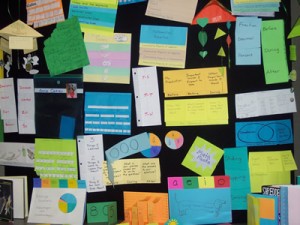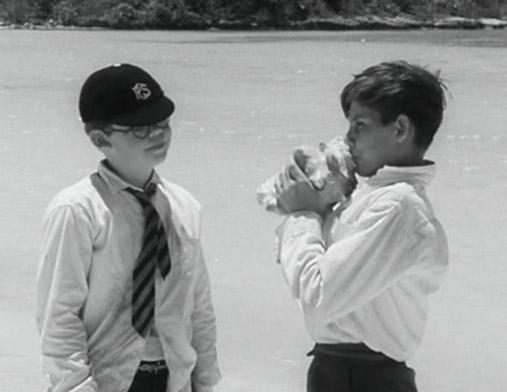 Without a doubt, working with poetry causes AP Lit students the most angst. However, this process does not have to be onerous! Working your way through a poem thoughtfully takes care and attention. Here are two methods you can employ to help you process even the most mysterious of sonnets and have it make (more) sense.
Without a doubt, working with poetry causes AP Lit students the most angst. However, this process does not have to be onerous! Working your way through a poem thoughtfully takes care and attention. Here are two methods you can employ to help you process even the most mysterious of sonnets and have it make (more) sense.
COLOR MARKING PROSE AND POETRY PASSAGES
Technique by Dr. Jan Adkins, St. Petersburg High School IB Program
Defining the Terms:
IMAGE: a word (or more than one word) appealing to at least one of our senses; an image deals with reader response. Of our five senses (visual, auditory, olfactory, tactile, gustatory), the visual is the strongest.
IMAGE PATTERN: the repetition of three (yes, three is a magic number!) images, not necessarily in uninterrupted succession.
MOTIF: a repeated pattern of any type within a work. Note that an image pattern IS a motif, but a motif is NOT always an image pattern.
The Process:
- Mark with a different color each type of image/image pattern/motif predominant in the passage.
- Based on your color marking, ask these questions (think about them as you go; you don’t necessarily have to write the answers):
–Why?
–Is there some logical progression of imagery/motifs, from one type to another?
–Is the progression illogical?
–Why?
–How do the images/motifs reinforce and/or illustrate the content of the passage? Imagery reinforces content by giving it emphasis, making it fresh (an unusual or creative use of imagery), and/or by adding irony (imagery appears to contradict the content or describe it in terms of its opposite qualities).
- Based on your answers to these questions and any others you think appropriate, CODE each color marked with INFERENCES you draw about the use of that particular image/image pattern/motif.
- At the bottom of the page, write a brief interpretation of the poem. Use information from your color marking to explain your reasoning.
TPCASTT
The TPCASTT method helps you make sense of a poem by considering different parts/aspects.
T – TITLE: The meaning of the title without reference to the poem.
P – PARAPHRASE: Put the poem, line by line, in your own words. DO NOT READ INTO THE POEM. Only read on surface level.
C – CONNOTATION: Looking for deeper meaning. Consider nuances of word meanings and how they are being applied:
Diction and symbolism
Imagery
Metaphors and similes
Rhyme scheme
End rhymes and internal rhymes
End stop
Enjambment
Alliteration
Assonance
Consonance
Mood
Allusions
Punctuation
Personification
A – ATTITUDE: Looking for the author’s tone. How is the writer speaking?
S – SHIFTS: Looking for shifts in tone, action, and rhythm. Don’t just write the number. Discuss how the shift(s) affects the poem.
T – TITLE: Reevaluate the title now that you have considered the elements in the piece. How does it signal the overall meaning?
T – THEME: What does the poem mean? What is it saying? How does it relate to life?

 Foldables (as anyone who’s ever has Mrs. Parm for a class would know) can prove to be a very helpful study aid. We’ll be using a simple foldable to collect textual support for your seminar on Light in August.
Foldables (as anyone who’s ever has Mrs. Parm for a class would know) can prove to be a very helpful study aid. We’ll be using a simple foldable to collect textual support for your seminar on Light in August.
 In preparation for our Socratic seminar on Lord of the Flies, please gather textual support that will help you answer the following questions. Although direct quotations are encouraged, references to specific plot elements, characters, etc. in the text will suffice. Remember that the ultimate goal of the seminar is to enhance your knowledge of the work itself, so focus your attention on what occurs in the text rather than speculation drawn from the events in the text.
In preparation for our Socratic seminar on Lord of the Flies, please gather textual support that will help you answer the following questions. Although direct quotations are encouraged, references to specific plot elements, characters, etc. in the text will suffice. Remember that the ultimate goal of the seminar is to enhance your knowledge of the work itself, so focus your attention on what occurs in the text rather than speculation drawn from the events in the text.

Thug Notes: Lit Circles Novels
Sparky Sweets, Ph. D., is a big fan of messed up dystopias, y’all! Salty language and adult themes ahead. Proceed with caution.
And because Dr. Sweets hasn’t gotten around to it yet, here’s the Shmoop review of One Flew Over the Cuckoo’s Nest:
Comments Off on Thug Notes: Lit Circles Novels
Filed under AP Literature
Tagged as 1984, analysis, Brave New World, commentary, lit circles, One Flew Over the Cuckoo's Nest, The Handmaid's Tale